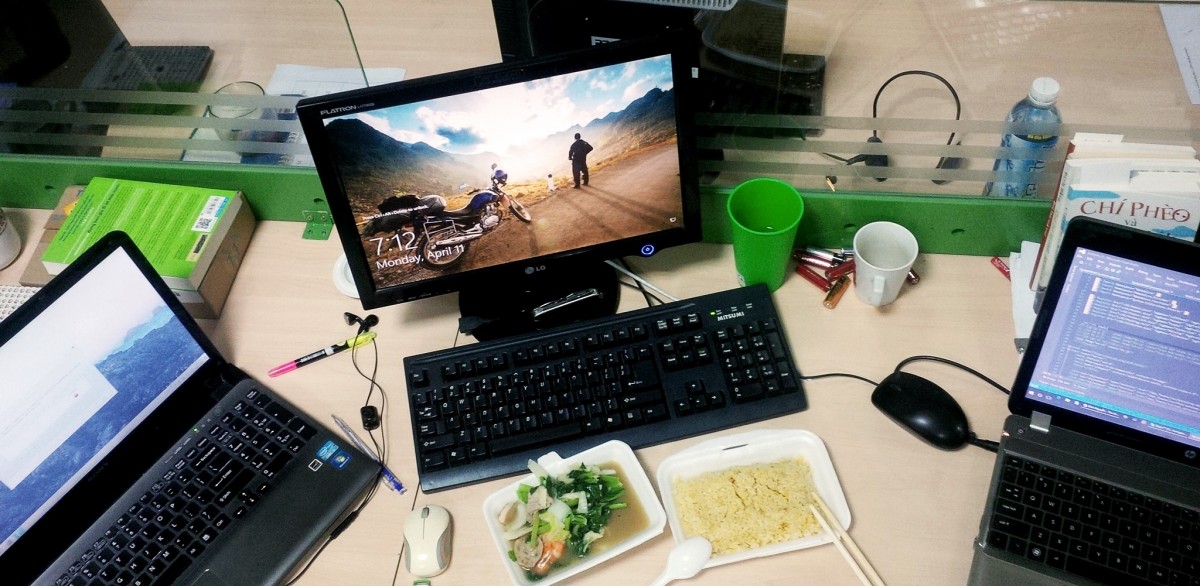As much as we wish everyone was as responsible and trustworthy as you, the truth is that employees spend a lot of their time on social media when they’re actually supposed to be getting things done. Worse still, some employees would not even think twice before hopping into a multiplayer game challenge online, using the company’s workspace desktop and its Internet connection. From buying beachwear to watching cat videos — face it, there’s somebody in your office doing this as you read this story. And it’s even worse during the holiday season. Surveys show that more than half the workers plan to do online shopping at work using company resources. Just as you cannot be everywhere to keep an eye on work-dodging employees, deploying expensive IT resources into the identifying the culprits is not a good answer. So, what’s the solution? The answer — employee activity monitoring software.
What is activity monitoring software?

These are enterprise applications built to monitor activity done on computers and other devices connected to your enterprise network. These applications can even be installed on workstations of your employees who work from remote locations. The monitoring capabilities of these applications are not expensive but they are expansive; from monitoring work emails to generating scheduled screen captures, from employee-level productivity reporting to the prevention of data leakage or data theft.
The primary business case for employee activity monitoring software stems from the enterprise’s need to ensure that employees don’t waste their work-time and don’t use the workstation for personal work or leisure.
In this guide, we will consider this, and several other business benefits of using employee activity monitoring tools.
First step toward workplace productivity measurements
The typical full-time employee is paid to work at least eight hours a day. But it’s estimated that an employee wastes 90 to 250 minutes a day. You only need to map the hourly wage on to the wasted time to understand the dollar value impact of this wastage of time. Here’s a basic example to elucidate this.
Assume that your 10-member team has a couple of slackers who can’t get enough of cat videos on YouTube every day. Even the most basic and inexpensive employee activity monitoring software will be able to alert you to the exact number of minutes wasted by them every day. Even if it’s one hour every day, and assuming you’re paying minimum wages (let’s say $11/hour), you’re looking at $57,242 lost annually (assuming 261 working days in the year). You can get the most powerful monitoring software for a fraction of the price!
Other reasons for employee activity monitoring software

Apart from their super quick pay off by preventing dollar-loss in wasted time, these applications offer a lot more.
Identifying errors early: Such software can alert supervisors if an employee forgets to initiate work on an important and urgent project.
Data leakage protection: These applications can send alerts to designated individuals upon the detection of activities such as sending emails to addresses out of company domain, or uploading files on a server different than that of the enterprise.
Employee safety: Several enterprises use user activity monitoring software to ensure that they remain aware of the locations of field employees, particularly those working in areas with sensitive security.
Transparency with remote workers: As enterprises become more and more open to the idea of remote work, the relevance of employee activity monitoring applications is obvious because they enable transparency into the quality and quantity of work done by employees not directly in contact with their supervisors.
The firewall consideration
Employee activity monitoring software is designed to work on multiple workstations, connected to an admin workstation. Installations often interfere with the network firewall put in place by IT, which makes the implementation a tricky affair. However, vendors are prepared to assist enterprise IT in managing the safe and secure implementation of these applications, without compromising the level of security put in place via firewalls. A word of caution: several cybercriminals float their versions of activity monitoring tools, which are actually malicious programs meant to bypass your firewalls. So only work with a credible vendor while implementing employee activity monitoring software for your business.
Deployment models
Like most enterprise applications, employee activity monitoring software is available in on-premises and cloud configurations. Businesses tend to prefer on-premises implementations because they want to retain complete control of the voluminous data generated every day, particularly if they already have on-premises infrastructure. Cloud-based deployments, however, are much easier to manage and can be completed quicker. Though most employee activity monitoring software vendors offer on-premises setups, quite a few have started offering cloud models as well because of the ease, flexibility, and affordability it offers.
Through the regulatory and ethical lens

In 2010, the U.S. Supreme Court ruled it legal for employers to track and monitor the activities of their employees as long as they were using company equipment and working within the stipulated hours. This includes laptops, desktops, mobile phones, USB devices, pagers, among several others. There never really has been any regulation on the kind of applications that employers can use for this monitoring. However, it has become standard for monitoring programs to include capabilities of tracking keystrokes and passwords as well, apart from applications and web usage monitoring.
Ethically, there have been discussions that question the idea of stealth monitoring of employee activities on enterprise machines. However, the argument hasn’t ever held much weight. The bottom line is that a business entity has the right to take measures to ensure that their employees use their workplace time and equipment judiciously and appropriately.
An increasing number of state governments in the United States are issuing guidelines to employers for them to notify employees that their activities in work desktops and within enterprise networks will be monitored. So, the best way for any business is to include a disclosure in the employee orientation guidebook, apart from sending email reminders to employees.
Tremendous benefits
Employee activity monitoring applications have tremendous benefits for businesses of all scales and sizes. Use the insight offered in this guide to get one for your business.
Photo credit: Shutterstock




You could also try working with freelancers as their work is being monitored very closely by the timer client.